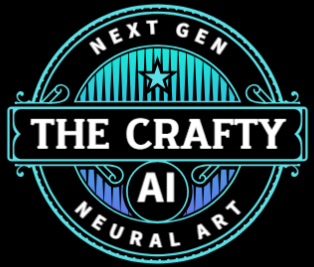Nova AI: Video Editing Powered by Artificial Intelligence
Nova AI represents a hypothetical leap forward in the field of artificial intelligence, envisioned as a next-generation system that could push the boundaries of what AI can achieve. While no specific "Nova AI" exists in the public domain as of my last update, this article explores the concept of a highly advanced AI system, drawing on trends and innovations in the AI landscape up to July 25, 2025. Nova AI symbolizes a future where AI integrates seamlessly into daily life, offering unparalleled capabilities in reasoning, creativity, and human-AI collaboration.
Core Features of Nova AI
Advanced Reasoning and Problem-Solving
Nova AI would likely feature enhanced reasoning capabilities, surpassing current models like large language models or multimodal systems. It could tackle complex, multi-step problems across disciplines—mathematics, science, and philosophy—by combining logical deduction with intuitive leaps. For instance, it might solve open-ended problems like optimizing renewable energy grids or devising novel medical treatments by synthesizing vast datasets and generating actionable insights.
Multimodal Integration
A hallmark of Nova AI would be its ability to process and generate multiple data types—text, images, audio, and even sensory inputs like temperature or tactile feedback. This multimodal approach would enable applications like real-time translation of spoken languages with cultural nuance, or designing architectural blueprints from verbal descriptions, complete with structural calculations.
Contextual Awareness and Memory
Nova AI could maintain long-term contextual memory, allowing it to recall past interactions and build on them. Imagine a virtual assistant that remembers your preferences from years ago, adapting its responses to your evolving needs. This would make Nova AI a powerful tool for personalized education, therapy, or project management, offering continuity and depth in interactions.
Ethical and Transparent Design
Built with ethical considerations at its core, Nova AI would prioritize transparency, fairness, and accountability. It could include mechanisms to explain its decision-making process, ensuring users understand how conclusions are reached. Bias mitigation algorithms would be embedded to minimize harmful outputs, making it a trustworthy partner in sensitive domains like healthcare or law.
Potential Applications
Healthcare
Nova AI could revolutionize diagnostics by analyzing medical imaging, patient histories, and genetic data to predict diseases with unprecedented accuracy. It might assist surgeons with real-time guidance during complex procedures or personalize treatment plans based on individual patient profiles.
Education
In education, Nova AI could act as a personalized tutor, adapting to each student’s learning style and pace. It could generate interactive simulations for subjects like physics or history, making abstract concepts tangible and engaging.
Creative Industries
For creatives, Nova AI could co-author novels, compose music, or design immersive virtual reality experiences. Its ability to understand emotional nuances could lead to art that resonates deeply with human audiences.
Scientific Research
In research, Nova AI could accelerate discoveries by hypothesizing new theories, running virtual experiments, and analyzing results faster than traditional methods. It might predict protein folding patterns or model climate change scenarios with high precision.
Challenges and Considerations
Ethical Risks
Despite its potential, Nova AI would face challenges like ensuring data privacy and preventing misuse in areas like surveillance or misinformation. Robust governance frameworks would be essential to regulate its deployment.
Computational Demands
The computational power required for Nova AI could be immense, raising concerns about energy consumption and environmental impact. Innovations in energy-efficient hardware or quantum computing might be necessary to make it sustainable.
Societal Impact
Widespread adoption of Nova AI could disrupt job markets, particularly in roles involving routine cognitive tasks. Preparing society for this shift would require proactive measures like reskilling programs and universal basic income experiments.
The Road Ahead
The development of a system like Nova AI would demand collaboration among researchers, policymakers, and industry leaders. Organizations like xAI, focused on advancing human discovery through AI, could play a pivotal role in shaping such technologies. While Nova AI remains a conceptual ideal, its principles align with ongoing efforts to create AI that is more intelligent, ethical, and human-centric.
Conclusion
Nova AI represents a vision of artificial intelligence that transcends current limitations, offering a glimpse into a future where AI is a true partner in human progress. By combining advanced reasoning, multimodal capabilities, and ethical design, it could transform industries and enrich lives. However, realizing this vision requires careful navigation of technical, ethical, and societal challenges. As we move toward 2030, the pursuit of Nova AI-like systems will likely define the next era of technological innovation.

